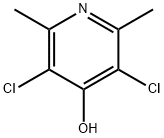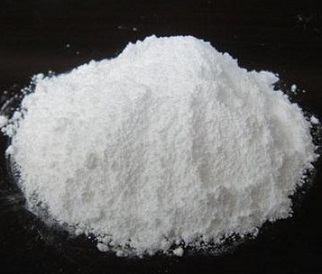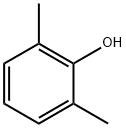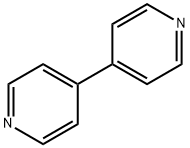Clopidol
Synonym(s):3,5-Dichloro-2,6-dimethyl-4-pyridinol
- CAS NO.:2971-90-6
- Empirical Formula: C7H7Cl2NO
- Molecular Weight: 192.04
- MDL number: MFCD00867211
- EINECS: 221-008-2
- SAFETY DATA SHEET (SDS)
- Update Date: 2026-01-16 16:10:54

What is Clopidol?
Description
Clopidol is a coccidiostat. It prevents mortality of chickens infected with the parasites E. tenella, E. necatrix, E. acervuline, E. mivati, E. brunetti, and E. maxima. It has antimalarial activity against P. berghei in mice and P. cynomologi in rhesus macaques. Clopidol is a potential contaminant in food poultry. Formulations containing clopidol have been used in the prevention of coccidiosis in chickens.
Description
The drug methylchlorpindol is used for the prevention of coccidiosis in poultry.
Chemical properties
Clopidol is a white to light brown powder.
The Uses of Clopidol
GABA Cl channel agonist, antiparasitic
The Uses of Clopidol
An antibiotic used in veterinary medicine as a coccidiostat in poultry. Showed low order of acute and chronic toxicity in animals.
The Uses of Clopidol
An antiprotozoal agent.
What are the applications of Application
Clopidol is an antiprotozoal agent
Definition
A penta-substituted pyridine derivative.
General Description
White to light-brown, crystalline solid. Mp: 320°C. Practically insoluble in water. Administered to poultry to prevent the growth of pathogenic parasites.
Reactivity Profile
Clopidol is a non-combustible as a solid, but dust may burn rapidly or explode when mixed with air and ignited.
Hazard
Toxic. Mutagenic effects. Questionable carcinogen. Clopyralid.
Contact allergens
This drug is used for the prevention of coccidiosis in poultry.
Safety Profile
A nuisance dust. When heated to decomposition it emits very toxic fumes of Cland NOx.
Potential Exposure
Those engaged in formulation, application or manufacture of this veterinary antibiotic. Used as a pharmaceutical and as feed and food additive
First aid
If this chemical gets into the eyes, remove anycontact lenses at once and irrigate immediately for at least15 min, occasionally lifting upper and lower lids. Seek medical attention immediately. If this chemical contacts theskin, remove contaminated clothing and wash immediatelywith soap and water. Seek medical attention immediately. Ifthis chemical has been inhaled, remove from exposure,begin rescue breathing (using universal precautions, including resuscitation mask) if breathing has stopped and CPR ifheart action has stopped. Transfer promptly to a medicalfacility. When this chemical has been swallowed, get medical attention. Give large quantities of water and inducevomiting. Do not make an unconscious person vomit.
Storage
Color Code—Blue: Health Hazard/Poison: Storein a secure poison location. Prior to working with clopidolyou should be trained on its proper handling and storage.Store in tightly closed containers in a cool, well-ventilatedarea.
Shipping
UN3249 Medicine, solid, toxic, n.o.s., Hazard Class: 6.1; Labels: 6.1-Poisonous materials.
Incompatibilities
Noncombustible solid, but dust may explode in cloud form. Contact with strong oxidizers may cause a fire or explosion hazard
Waste Disposal
Dispose of contents and container to an approved waste disposal plant. All federal, state, and local environmental regulations must be observed. It is inappropriate and possibly dangerous to the environment to dispose of expired or waste drugs and pharmaceuticals by flushing them down the toilet or discarding them to the trash. Household quantities of expired or waste pharmaceuticals may be mixed with wet cat litter or coffee grounds, double-bagged in plastic, discard in trash. Larger quantities shall carefully take into consideration applicable DEA, EPA, and FDA regulations. If possible return the pharmaceutical to the manufacturer for proper disposal being careful to properly label and securely package the material. Alternatively, the waste pharmaceutical shall be labeled, securely packaged, and transported by a state licensed medical waste contractor to dispose by burial in a licensed hazardous or toxic waste landfill or incinerator.
Properties of Clopidol
| Melting point: | >320℃ |
| Boiling point: | 318.4±37.0 °C(Predicted) |
| Density | 1.2494 (rough estimate) |
| refractive index | 1.5500 (estimate) |
| storage temp. | Inert atmosphere,Room Temperature |
| solubility | Aqueous Base (Slightly), Methanol (Slightly, Heated) |
| form | neat |
| pka | 5.50±0.33(Predicted) |
| form | Solid |
| color | White to Off-White |
| Water Solubility | 40mg/L(temperature not stated) |
| Stability: | Hygroscopic |
| CAS DataBase Reference | 2971-90-6(CAS DataBase Reference) |
| EPA Substance Registry System | Clopidol (2971-90-6) |
Safety information for Clopidol
| Signal word | Warning |
| Pictogram(s) |
 Exclamation Mark Irritant GHS07 |
| GHS Hazard Statements |
H315:Skin corrosion/irritation H319:Serious eye damage/eye irritation H335:Specific target organ toxicity, single exposure;Respiratory tract irritation |
| Precautionary Statement Codes |
P261:Avoid breathing dust/fume/gas/mist/vapours/spray. P264:Wash hands thoroughly after handling. P264:Wash skin thouroughly after handling. P271:Use only outdoors or in a well-ventilated area. P280:Wear protective gloves/protective clothing/eye protection/face protection. P302+P352:IF ON SKIN: wash with plenty of soap and water. P305+P351+P338:IF IN EYES: Rinse cautiously with water for several minutes. Remove contact lenses, if present and easy to do. Continuerinsing. |
Computed Descriptors for Clopidol
| InChIKey | QCMHHYSPKNVXLR-UHFFFAOYSA-N |
New Products
DL-beta-(3-Bromophenyl)alanine Tetrabutylammonium perchlorate N,O-Dimethylhydroxylamine hydrochloride (RS)-beta-Amino-beta-(4-bromophenyl)propionic acid 2-Amino-5-bromo-4-(trifluoromethyl)pyridine(RM for Indian lab) N,N CARBONYL DIIMIDAZOLE Levothyroxine Impurity-F Montelukast EP Impurity-D/Montelukast USP Related Compound C Atorvastatin FXA Impurity/Atorvastatin Cyclic 6-Hydroxy Impurity Sodium Salt Isosulfan blue Keto N-Oxide Impurity Ivermectin Impurity F N-Nitroso des Methyl Tramadol/N-Nitroso-N-Desmethyl-Tramadol (R)-BoroLeu-(+)-Pinanediol-CF3COOH 1,4-bis(methylsulfonyl)butane 4-(5-amino-1-methyl-1h-benzoimidazol-2-yl)-butyric acid isopropyl ester. 5-Methyl-1,3-benzenediacetonitrile 4-Fluorothiophenol 1-methyl amino-2,4-dinitro benzene CSA (DL-10-Camphorsulfonic Acid) 2-Hydroxy-4-methylnicotinic acid 3-iodo-1H-pyrazolo[3,4-d]pyrimidin-4-amine (2S)-1-((2S,3S)-3-(2-methylbutyl)-4-oxooxetan-2-yl)pentadecan-2-yl formylleucinate 1-(3,5-dichlorophenyl)-2,2,2-trifluoroethane-1-sulfonyl chloride S-(1-(3,5-dichlorophenyl)-2,2,2-trifluoroethyl) ethanethioateRelated products of tetrahydrofuran








You may like
-
 Clopidol 98.00% CAS 2971-90-6View Details
Clopidol 98.00% CAS 2971-90-6View Details
2971-90-6 -
 Clopidol CAS 2971-90-6View Details
Clopidol CAS 2971-90-6View Details
2971-90-6 -
 674783-97-2 98+View Details
674783-97-2 98+View Details
674783-97-2 -
 H-D-TRP(FOR)-OH HCL 98+View Details
H-D-TRP(FOR)-OH HCL 98+View Details
367453-01-8 -
 49830-37-7 98+View Details
49830-37-7 98+View Details
49830-37-7 -
 3-Amino-3-(4-fluorophenyl)propanoic acid 98+View Details
3-Amino-3-(4-fluorophenyl)propanoic acid 98+View Details
325-89-3 -
 1428243-26-8 98+View Details
1428243-26-8 98+View Details
1428243-26-8 -
 1-aminocyclopentane carbonitrile, HCl 98+View Details
1-aminocyclopentane carbonitrile, HCl 98+View Details
16195-83-8
